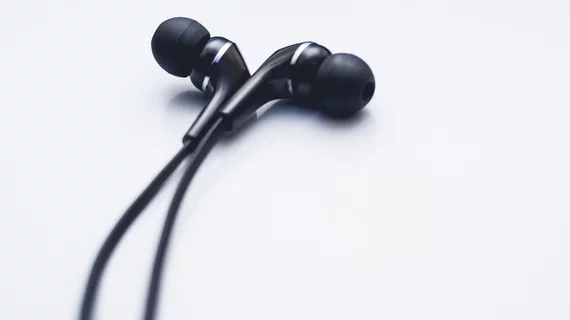Blood pressure-monitoring technology is hitting the wearables market hard this year, and tech companies are vying to create the optimal tool for tracking BP on the go. But one company thinks they already have it figured out, according to CNET—in the form of BP-monitoring earbuds.
Writing from CES 2020 in Las Vegas, CNET contributor Scott Stein, who has high blood pressure himself, said he had the chance to test the smart headphones, which come from North-Carolina based health tech company Valencell. For years, the company has been trying to adapt its photoplethysmography technology to measure BP.
Stein said the company’s president and co-founder, Steven LeBoeuf, told him the ear was a superior site to measure BP compared to a finger or a wrist, because ears receive more blood flow and stay the same distance from your heart so long as you’re not bending over. Valencell’s earbuds, which work in conjunction with a smartphone app, do require users to sit still for a 30-second reading, but Stein wrote “the results can show up in a continuous sort of real-time state on the phone, and LeBoeuf says that the tech could be used to continuously monitor blood pressure in ways that a standard cuff couldn’t.”
Valencell reportedly used more than 15,000 datasets from 5,000 subjects to develop its BP algorithm, then tested more than 600 measurements from over 130 subjects to get readings that presently fall within 8mm of mercury degree of error of today’s BP cuffs. Stein said the company’s goal will be to launch the earbuds first as general wellness devices, with the opportunity to upgrade them to medical status in the future.
Read more below:

